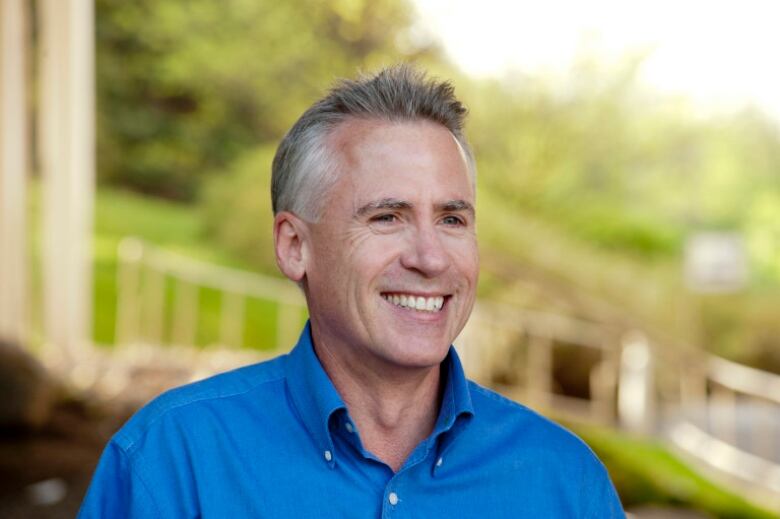What needs to happen next to deal with Woodstock, Ont., suicide crisis?
Mental health access critical as Canadian youth with 'chronic thoughts of hurting themselves' await help

As residents inthesouthwestern Ontario city of Woodstock struggleto understand why five young people have takentheir own livesin the last four months,experts say long-term support for youth and changesinvolving the whole community arecritical.
"Often when you have a tragedy, whether it's an airplane crash or something like that, we have a history of bringing in a rapid access response team that does some post-traumatic kind of work and then often leave," said IanManion, director of Youth Mental Health Research at the Royal Ottawa Mental Health Centre.
"When you're talking about suicide, especially youth suicide,you really do have to look at 'what do we need to do immediately, but what do we need to do in the months to come, in the years to come?'"

In addition to providing immediate support to youth, the community which has a population of about 35,000, needs to treat the issue as a "teachable moment," for suicide prevention in the future,looking at how it promotes overall wellness,its capacity to identify mental illness early, and ensuring young people get access to mental health services when they need them, Manion said.
Woodstockis not the only community in Canada dealing with multiple suicides or suicide attempts.In April, Attawapiskat First Nation declared a state of emergency when 11 people tried to take their own livesin one night. Experts say the circumstances differ, but many view youth suicide as an urgent national problem.
Lack of access to youth mental health services is a big issueincommunities across Canada, said JoannaHenderson, ofToronto's Centre for Addiction and Mental Health (CAMH).
Even youth who have "chronic thoughts of hurting themselves" often can't get immediate help. she said.
"Those young people do sit on waiting lists. And that is shameful from my perspective."

What's "really discouraging," Henderson said, is thatyouth suicide rates haven't gone down over the years and suicide remains one of the leading causes of death among young people in Canada.
"We've seen clusters of suicides in communities for as long as I've been in this field," said Manion, who has been a clinical psychologist for more than30 years.
"It could be any community," hesaid. "Anybody could be at risk at any moment in time."
Canadian communities needan "array of services" to help prevent suicides, Manion said, and it's essential to involve youth in "co-creating" solutions.
"Engaging young people in meaningful ways actually reduces the risk of suicide," he said. "When young people feel that they're part of something bigger than their problems, they actually feel more supported and they're at less risk for a whole bunch of things, including suicide."
Henderson agrees that youth have a critical role to play in suicide prevention strategies.
"If youth aren't at the table, then you run the risk of missing the most important factors that are contributing to that specific situation," she said.
"You risk missing maybe ...the most innovative solutions or the solutions that are most likely to be effective," she said. "Many of us as adults are separated from what it's actually like to be a young person today."
For example, health organizations typically require people to book appointments by phone, but teensare often more comfortable communicating bytextor social media, Hendersonsaid.
"Our policies haven't caught up with changes in technology to allow us to use that in a way that's helpful [for youth]."
Stigma still an issue
Overcoming stigma and getting people to talk about suicide is another change that's desperately needed in communities, said Scott Chisholm of Thunder Bay, Ont.,founder of a nationaladvocacy organization called theCollateral Damage Project.

Chisholm was a teenager when his father took his own life. He felt isolated in his pain afterward, largely because no one,including his teachers, would even say the word "suicide."
Decades later, Chisholm became an advocate for suicide prevention.He promotes a programcalled SafeTalk, which trains people on "how to talk about it openly," and is calling for policy changes that would requireteachers and health-care professionals to take the three-hour workshop, which he likens to a CPR course for mental health.
Henderson agrees that stigma is still a big factor in thesuicide problem.
"I think we've made tremendous advances in terms of creating safe spaces for young people to talk, but there's still a lot of discomfort and distress in talking about some of those issues," she said.
Where to get help
Kids Help Phone:1-800-668-6868
Canadian Association for Suicide Prevention:Find a24-hour crisis centre
If you're worried someone you know may be at risk of suicide, you should talk to them,says theCanadian Association of Suicide Prevention. Here aresome warning signs:
- Suicidal thoughts.
- Substance abuse.
- Purposelessness.
- Anxiety.
- Feeling trapped.
- Hopelessness and helplessness.
- Withdrawal.
- Anger.
- Recklessness.
- Mood changes.












_(720p).jpg)


 OFFICIAL HD MUSIC VIDEO.jpg)
.jpg)



























































































